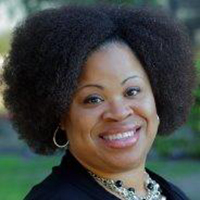• by Paula N. Johnson, Ph.D. • IDRA Newsletter • March 2019 •


Restorative practice is a “relational approach to building school climate and addressing student behavior” (Armour, 2012). It focuses on teaching students how to take responsibility for their actions. This article includes an overview of the processes of restorative practice, preliminary research findings and recommendations for implementation.
The Restorative Process
Restorative practice is both proactive (developing community by building relationships) and reactive (restoring relationships by repairing harm). Schools and programs that only use the reactive elements without building the social capital first are less likely to see positive results (Watchel, 2013).
Restorative practice develops community and manages conflict and tensions by building relationships and repairing harm.
Introducing restorative practice usually requires a complete paradigm shift for stakeholders involved. Rather than ignoring behavior (neglect), punishing behavior (doing to), or enabling behavior (doing for), restorative practice uses informal and formal processes to address behavior with students. The restorative practices continuum ranges from informal processes (affective statements and questions) to formal processes (impromptu conferencing, “circles” and formal conferencing).
The key to restorative practice lies in the questions asked of those involved. Giving students the opportunity to share their version of events enables them to be heard. Many times, students’ main complaint about discipline is that no one listened to them. Rather than asking a student, “What did you do?” or “Why did you do that?” restorative practice outlines five key questions that guide conversations to address harm:
- What happened?
- What were you thinking at the time?
- What have you thought about since?
- Who has been affected by your behavior or actions and in what way?
- What do you think needs to be done to make things as right as possible?
One of the most impactful elements of restorative practice is called circles. Around a circle, everyone has equal voice. A talking piece is passed around the circle as each person shares without interruption.
Circles can be used for a variety of purposes, such as building relationship and community, problem solving, decision making, conflict resolution, and for academic discussions about content. Restorative practice circles task each participant to (1) listen from the heart, (2) speak from the heart, (3) be honest and respectful, and (4) say enough, but not too much.
Outcomes and Recommendations
Given the recent growth of restorative practice use in schools, not much data has been collected on a large scale to determine effectiveness. Yet, there are studies that show that restorative practice is having a positive impact on student discipline.
In one large urban district, Denver Public Schools, for example, students in schools that implemented restorative practice in the fall semester had lower chances of receiving an office referral or being suspended in the spring (Anyon, et al., 2016).
A study found that the most frequently used component of the program is circles (Guckenburg, et al., 2016). Additionally, participants overwhelmingly agree that schools implementing restorative practice experience a large and quick decrease in the number of student suspensions and expulsions (Guckenburg, et al., 2016).
The restorative practice process does not come without challenges. Insufficient funding; resistance from administrators, staff, students and parents; and extensive training requirements can hinder a successful transition. But students are capable of succeeding in school with community support. The restorative approach is a guiding philosophy that values relationships as a fundamental requirement for learning, growth, and a positive school climate for students and adults.
Recommendations for districts considering restorative practice and for those in the beginning stages of implementation include:
- Provide teachers with comprehensive training prior to implementation;
- Understand that the first phase of implementation is about building relationships, not discipline; and
- Involve parents and caregivers in the process (Payne & Welch, 2015).
Through the IDRA EAC-South’s partnership with the Florida and the Islands Comprehensive Center, we have provided turn-around training to nearly 100 restorative practice coordinators in six school districts across Florida between October and February. Our three-day training unpacks the components of restorative practice and integrates implicit bias discernment and cultural competence as part of the larger framework for increasing equity in schools. Three districts are planning a full implementation of restorative practice during the 2019-20 school year with continued support from the IDRA EAC-South. We will work with the districts to design evaluation tools to measure results as part of our continued partnership. For more information about restorative practice in-service training in Region II, contact the IDRA EAC-South at 210-444-1710 or eacsouth@idra.org.
Resources
Anyon, Y., Gregory, A., Stone, S., Farrar, J., Jenson, J., McQueen, J., Downing, B., Greer, E., & Simmons, J. (2016). “Restorative Interventions and School Discipline Sanctions in a Large Urban School District,” American Educational Research Journal.
Armour, M. (2012). Ed White Middle School Restorative Discipline Evaluation: Implementation, and Impact.
Guckenburg, S., Hurley, N., Persson, H., Fronius, T., & Petrosino, A. (2016). Restorative Justice in U.S. Schools: Practitioners’ Perspectives. San Francisco, Calif.: WestEd.
Payne, A.A., & Welch, K. (2013). “Restorative Justice in Schools: The Influence of Race on Restorative Discipline,” Youth & Society.
Watchel, T. (2013). Defining Restorative. Bethlehem, Penn.: International Institute of Restorative Practices.
Paula N. Johnson, Ph.D., is an IDRA education associate and director of the IDRA EAC-South. Comments and questions may be directed to her via email at paula.johnson@idra.org.
[©2019, IDRA. This article originally appeared in the March 2019 IDRA Newsletter by the Intercultural Development Research Association. Permission to reproduce this article is granted provided the article is reprinted in its entirety and proper credit is given to IDRA and the author.]


